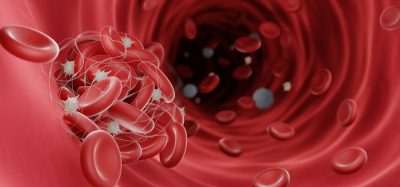Novel drug discovery approach for personalised mental health treatment
Posted: 10 May 2019 | Drug Target Review | No comments yet
Researchers have developed a method that could drastically accelerate the search for new drugs to treat mental health disorders.


A team of scientists led by the University of Cambridge have shown that live blood cells from patients with mental health disorders can be used to identify potential targets for drug discovery research.
Mental health disorders are the leading cause of disability worldwide but no new neuropsychiatric drugs with improved treatment effects have been developed in the last few decades. This is mainly because doctors can’t take brain tissue samples from patients, so it’s difficult for researchers to understand exactly what to target when designing new neuropsychiatric drugs.
However, the scientists in this study have shown that live blood cells from patients with mental health disorders can be used to identify potential targets for drug discovery research.
Human blood cells contain many receptors and proteins involved in signalling that are also found in the central nervous system and have been shown to be linked to neuropsychiatric disorders. Previous research has shown that there is a strong link between blood cells and the way the central nervous system operates. This makes blood cells an ideal environment in which to test potential new drugs.
There is also significant evidence that using primary cells from patients in drug development leads to a higher success rate for effective drug discovery.
“This study proposes a shift in the field to directly explore live cellular function as a model for disease,” said Professor Sabine Bahn from Cambridge’s Department of Chemical Engineering and Biotechnology, who lead the research group behind the work.
Using a high-content single-cell screening process, the researchers analysed cells from 42 schizophrenia patients and screened thousands of potential compounds for new drugs. The team have focused on discovering new psychiatric uses for drugs which are routinely prescribed for other conditions, such as high blood pressure.
This drug ‘repurposing’ strategy can reduce the time and cost it takes to bring a new drug to the clinic tenfold. With an average drug development cost of $2-3 billion over 12 years, this represents an efficient alternative to deliver new potential treatments to patients in considerably less time. The approach could also lead to a reduction in animal testing.
They can also test existing psychiatric treatments on patient blood cells and may be able to predict how effective those treatments will be for each individual. This overcomes a major hurdle in clinical psychiatry as many patients do not respond to first-line treatments. To accomplish this, the team tested rare blood samples from schizophrenia patients before and after clinical treatment, collected via a network of international collaborators.
As a final step, the team confirmed that the activity of new drugs was shared between blood cells and brain cells, by testing those drug compounds on human nerve cells.
“This is the most in-depth, functional exploration of primary psychiatric patient tissue to date and has the potential to substantially accelerate drug discovery and personalised medicine for neuropsychiatric disorders and other human diseases,” added lead author Dr Santiago Lago, who developed the technology with Dr Jakub Tomasik.
Their results are reported in the journal Science Advances.
Related topics
Drug Discovery, Drug Repurposing
Related conditions
Neuropsychiatric disorders
Related organisations
University of Cambridge
Related people
Dr Jakub Tomasik, Dr Santiago Lago, Professor Sabine Bahn








